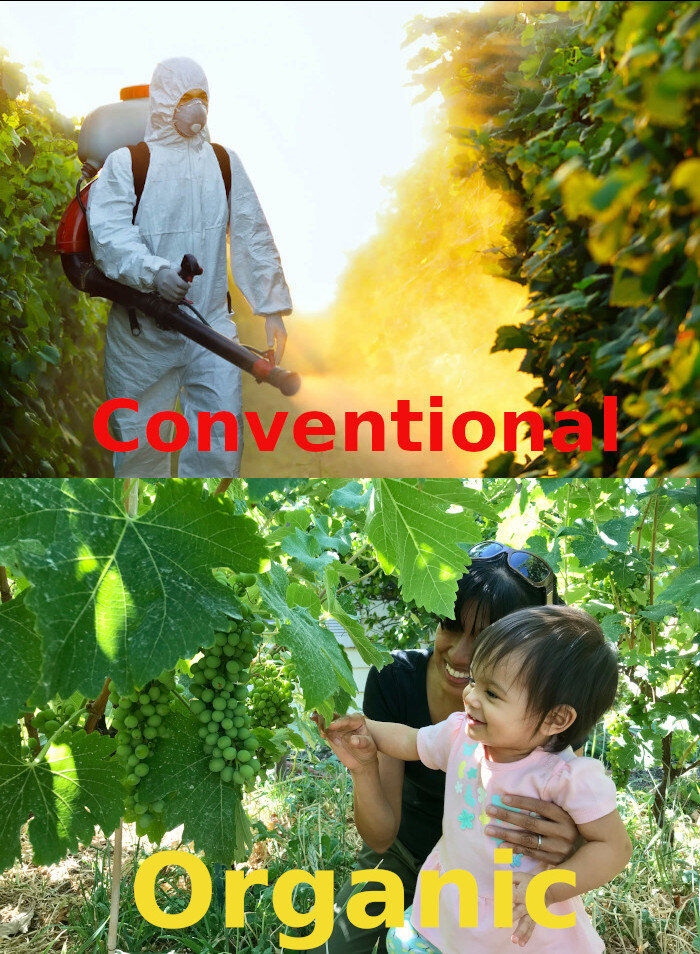The Importance Of Soil Health To Wine, And How To Foster It
I have the great pleasure of hosting the Organic Wine Podcast. I get to talk to brilliant, inspiring people about the amazing work they are doing in agriculture in general, and viticulture specifically. The common thread I found with all of my guests this year is that they see themselves directly tied to agriculture, no matter whether they are wine distributors, sommeliers, importers, winery general managers, or soil scientists and grape breeders.
We are all farmers, ultimately, because we literally determine how millions of acres of land around the world are farmed simply by our everyday consumption choices. Whether we buy this bread or that bread, this wine or that wine, actually has the power to change the world.
With this in mind, I wanted to summarize the dominant and fundamental themes that I have learned this year about wine. You’ll see by the end that there’s really only one theme, and it’s that the ground under our feet is the most important resource we have… and how we treat it will determine our future.
Where does your wine come from?
Soil. Soil. Soil.
It’s all about the soil.
A healthy, biodiverse soil ecosystem helps vines thrive, survive droughts, resist pests and pathogens, and helps create better tasting wine. A healthy, biodiverse soil ecosystem holds water, prevents erosion and run-off, and regenerates fertility. A healthy, biodiverse soil ecosystem pulls carbon out of the atmosphere, enriching plant life and rolling back the causes of climate change.
We cultivate a healthy, biodiverse soil ecosystem by planting the right vines in the right places, never using herbicides or other harmful synthetic chemical pesticides, planting diverse cover crops, fostering biodiversity in and around vineyards, integrating vineyards as much as possible into the natural environment, not tilling, grazing animals strategically, and composting.
2. Plants Are the Best Social Networkers
Plants have evolved to cooperate with trillions of bacteria, and connect to other plants and to each other via massive micorrhizal networks through which they exchange food and information. This is the soil-food-web. Plants are busy making millions of underground connections and communications while we walk about blithely thinking they are just stiff, solitary individuals.
When we till, or plow the soil, we break these vital connections and wound the soil.
3. You Don’t Feed the Vines, You Feed the Microbes
The way vines get the food they need to survive and thrive is by feeding carbon from the air to the bacteria and fungi in their root zone. Those bacteria and fungi break down the organic matter and nutrients in the soil and feed those to the vine in exchange for their carbon-based treats.
So when you put compost in the vineyard, you’re actually giving food to the microbes to give to the vines.
4. Soil Health is a Win-Win-Win Situation
First, let’s start with the lose-lose-lose example: Conventional farming.
In conventional farming you use chemical pesticides to kill many of the beneficial microbes, insects, flora and fauna along with the “harmful” ones. This results in a barren ecosystem which then must be enriched with more inputs in the form of chemical fertilizers. Over time the vines become more and more dependent on the pesticides and the fertilizers because they don’t have a healthy and biodiverse soil microbiome to give them what they need to thrive. They become like ICU patients on an IV. The grapes that result from this system lack the micronutrients and beneficial microbial partners necessary to have healthy fermentations naturally. So the winemaking must now involve the additions of yeast and yeast nutrients to ensure that the wines taste good. All of these additions – in the vineyard and the cellar – come at a cost, and the money you spend on them supports a huge agro-chemical industry and supply chain that perpetuates this unhealthy cycle and all of the damage it does to human and environmental health.
When you instead start by fostering a healthy soil by removing the chemical pesticides and fertilizers, the healthy and biodiverse soil microbiome strengthens the vines, which results in lowered costs as the vines become more and more healthy and less dependent on external inputs from year to year. It also protects the health of those who live and work in and around the vineyard, so you have healthy people to do the vineyard work, as well as healthy bird, animal, and insect populations to keep balance. As the soil-food-web improves each year so does the health of the grapes. Winemaking needs less inputs as healthy fermentations can take place naturally and without manipulation or additives. This results in wine that is rich with flavors that are vibrant and unadulterated. In addition, this system takes money away from the agro-chem industry/supply chain, removes carbon from the atmosphere, cleans waterways, and promotes the health of all.
That’s a win, win, win wine!
***
Please join our email list (below) if you'd like to be part of this agricultural revolution (and drink some great wine), and subscribe to the Organic Wine Podcast.
